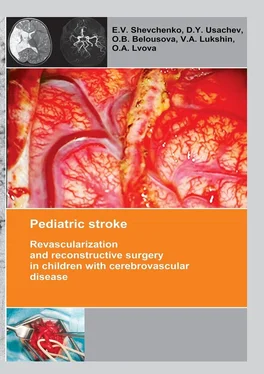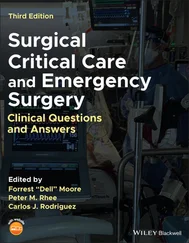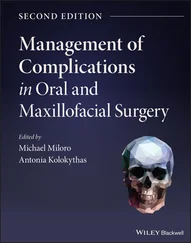O. Belousova - Pediatric stroke. Revascularization and reconstructive surgery in children with cerebrovascular disease
Здесь есть возможность читать онлайн «O. Belousova - Pediatric stroke. Revascularization and reconstructive surgery in children with cerebrovascular disease» — ознакомительный отрывок электронной книги совершенно бесплатно, а после прочтения отрывка купить полную версию. В некоторых случаях можно слушать аудио, скачать через торрент в формате fb2 и присутствует краткое содержание. ISBN: , Жанр: russian_contemporary, Медицина, на английском языке. Описание произведения, (предисловие) а так же отзывы посетителей доступны на портале библиотеки ЛибКат.
- Название:Pediatric stroke. Revascularization and reconstructive surgery in children with cerebrovascular disease
- Автор:
- Жанр:
- Год:неизвестен
- ISBN:9785449342652
- Рейтинг книги:5 / 5. Голосов: 1
-
Избранное:Добавить в избранное
- Отзывы:
-
Ваша оценка:
- 100
- 1
- 2
- 3
- 4
- 5
Pediatric stroke. Revascularization and reconstructive surgery in children with cerebrovascular disease: краткое содержание, описание и аннотация
Предлагаем к чтению аннотацию, описание, краткое содержание или предисловие (зависит от того, что написал сам автор книги «Pediatric stroke. Revascularization and reconstructive surgery in children with cerebrovascular disease»). Если вы не нашли необходимую информацию о книге — напишите в комментариях, мы постараемся отыскать её.
Pediatric stroke. Revascularization and reconstructive surgery in children with cerebrovascular disease — читать онлайн ознакомительный отрывок
Ниже представлен текст книги, разбитый по страницам. Система сохранения места последней прочитанной страницы, позволяет с удобством читать онлайн бесплатно книгу «Pediatric stroke. Revascularization and reconstructive surgery in children with cerebrovascular disease», без необходимости каждый раз заново искать на чём Вы остановились. Поставьте закладку, и сможете в любой момент перейти на страницу, на которой закончили чтение.
Интервал:
Закладка:
During the last decade a large number of thrombophilic mononucleotide genic polymorphisms were described. Carriership of proaccelerin, prothrombin, plasminogen activator inhibitor and fibrinogen is considered to be most significant clinically [61; 138]. F5 genotypes: 1691 G> A and AA (Leyden mutation) as well as F2: 20210 G> A and AA are currently the only ones, whose prothrombotic effect is acknowledged in newborns. Besides, there is a good reason to suppose that with the carriership of thrombogenic mutations and polymorphisms in children the risk degree differs according to their age [5; 56; 138].
Presently, there are no doubts regarding the connection of hyperhomocysteinemia and MTHFR677C> T mutation with cerebrovascular and cardiovascular diseases [5; 16; 61; 280]. Homocystein acts as a prothrombotic factor due to activation of coagulation factors XII and V, increase in tissue factor expression and suppression of thrombomodulin expression. Besides, the rise of homocystein in blood leads to vascular endothelium damages, which reveals in neurotoxic and proatherosclerotic effects and contributes to the emergence of resistance to activated protein C [3; 31; 66; 267; 276; 290]. During the latest years, the role of hyperhomocysteinemia in damaging the vascular walls was proven as well as its prothrombotic and pro-atherosclerotic effects and its effect on the vasomotoric regulation [3; 32; 290].
The MTHFR enzyme gene provides for homocystein metabolism with the participation of a folic acid. The greatest practical significance belongs to a mononucleotide replacement of cytosine with thymine at position 677 of gene, thus leading to a replacement of alanine amino acid residue with valine in the catalytic core of methylene tetra hydro folate reductase enzyme (MTHFR). Individuals, homozygous by this allelic mutation, display a decrease of the enzyme activity by 60—70%, and heterozygous – by 35% [28; 159; 275]. It should be noted that all available data concern either fundamental aspects of the pathology study, or the population of adult patients.
According to literature data, children are noted to have a positive correlation relationship between the incidence rate of strokes (especially, in boys) and C677T polymorphism. The combination of several variants of genes is accompanied by a progressive rise of homocystein level in blood, and it increases the risk of a CVD [61; 142; 229; 255; 269; 289]. At the same time, a series of genic polymorphisms controlling the folate cycle activity showed their protective function regarding the cerebrovascular pathology in Asian and European populations [82; 142]. Despite the indirect relationship between pheno- and genotype of hyperhomocysteinemia, the researchers’ opinion is unanimous: determination of the homocystein level and the state of folate cycle genes must become an insatiable component of diagnostic suite in this group of patients, especially, in boys (class II, recommendation level B) [280].
In the literature there is a description of singular clinical cases of BCA thrombosis in children. There are no general statistics on CCA, ICA and MCA occlusions in pediatric population neither in national, nor in foreign literature. In 1951 M. Fisher was the first to describe the post-thrombotic occlusion formation steps in ICA of adults with hemodynamic and embolic mechanisms of an ischemic stroke, having analyzed the angiograms of patients with CVDs [96]. Post-thrombotic occlusions of major arteries in the heads and necks of children account for from 13 to 37% in the structure of CVD causes.
In childhood there are more than enough initiating agents capable of worsening the hemorheologic situation or decreasing the athrombogenic properties of a vascular wall. The adverse course of the post-natal adaptation period, infection, microtraumatization and metabolic disorders can act as triggering factors and lead to an acute cerebral ischemia in the background of the carriership of mononucleotide polymorphisms in thrombophilic spectrum genes and in the genes, which control the activity of folate cycle enzymes. In children with CVDs (especially, when the onset is in the perinatal period), it is recommended to search for prothrombotic mutations even, when other causes of ACVD are identified (class IIa, recommendation level C) [107; 280]. At the same time, the detection of thrombophilic polymorphisms is not an absolute factor inevitably leading to thromboses. Attention should be paid to the quantity of revealed mononucleotide mutations, the fact of homozygous carriership, the variants of genes – genic combinations and their phenotypic manifestations [5; 121; 286].
If the researchers have no doubts about hyper-homocysteinemia presenting a risk of thrombi formation at a non-typical age, the atherothrombotic variant of CVD is a casuistry for pediatric practice. Such variants are described in singular cases and associated with proven, genetically determined, dyslipidemic syndromes [165; 167; 189], most of which proceed asymptomatically [54]. Nevertheless, the selective screening and the lipid metabolism monitoring are recommended for patients with a family history of an early onset of vascular diseases and for the ones with an unclear cause of the stroke [111; 239].
The significance of the infection process as the releasing factor with the developing acute cerebrovascular insufficiency in the background is great both in newborns (up to 17.6% among all causes) and in elder patients (up to 40.7%) [60; 63; 223; 226; 280]. The clinical study showed the significance of a short duration (up to 4 weeks) and the fact of minor infections as an independent risk, which both enhance the probability of an ischemic ACVD 4.6 times as much [43; 240]. When analyzing the strokes of an unknown etiology, it was noted that shortly before the stroke children had varicella 3 times more often than in the population; the probability of a stroke also remained high within the first four months after varicella [157; 160]. Besides, the study held in 2006 showed that, in children with the earlier revealed immunodeficiency, the risk of the recurring stroke grew 20.9 times as much and correlated directly with the level of white blood cells during the acute period of the disease. A chronic infection and the immunodeficiency are supposed to make their own contribution to the development of recurrent incidents of CVD in children in the same way, as in adults [108].
It cannot be ruled out that an infectious process flows in the nervous system by the mechanism of vasculitis. Presently, the VIPS study (The vascular effects of infection in Pediatric Stroke Study) is held with the hypothesis stating that the presence of an infectious agent triggers an endothelial dysfunction, a systemic inflammatory process, which, combined with insufficiency of connective tissue and prothrombotic readiness, leads to damages of the vascular wall, its dissection, thrombogenesis, luminal occlusion and cerebral ischemia [13; 101; 127]. Later on, an embolism may occur from the artery dissection site as well as the hemorrhagic transformation of an ischemic lesion [13; 16; 101]. Also, apart from vasculitis, some hemorrhagic complications caused by coagulopathy may occur in severe somatic diseases [54; 55]. Presently, there are no such distinct diagnostic criteria of cerebral vasculitis in children, which could provide grounds to assert with confidence that it was this disease that had caused the CVD [13]. It is proposed to keep in mind that vasculopathy may be the most probable etiology of a CVD in all cases of TIA, and that it happens always in pediatric or young patients, especially, in the absence of evident risks [22; 55; 168].
During their early period of life, in children with CVD one cannot ignore the pathological course of the prenatal period, which could act as one of the initiating agents [105; 280]. Hemoreologic situation deterioration, arterial blood pressure measurement, endothelial dysfunction, systemic inflammatory response and other pathological processes triggered by a perinatally caused hypoxia initiate a hypercoagulation state and a thrombosis of various localization. In its own turn, the cascade microthrombogenesis mechanism affects the perfusion situation at the thrombosis site, maintaining the hypoxia, initiating the necrotic and apoptotic mechanisms of nerve cell death. Besides, in infants with combined impairment of central nervous system and extra-cerebral pathology the adverse course of the period of adaptation to new living conditions may become the basic cause of inadequate blood supply to cerebral structures with the decrease of the cerebrovascular reserves [13; 19; 90; 223; 230]. Certainly, all by itself, the process of adaptation of a fetus and a newborn to new conditions of existence is physiological, but the mother’s diseases occurring before and during the pregnancy increase the probability of developing both ischemia and hemorrhages into cerebral structures of newborns and infants at all pre- and post-natal adaptation stages [25; 90; 140; 163]. Additional risks include intra-uterine infections, head and neck injuries, systemic bowel diseases, autoimmune diseases, water depletion, infertility in the mother’s history, premature rupture of fetal membranes, the mother’s pre-eclampsia [22; 34; 219]. Burdened perinatal anamnesis occurs in every fourth patient and, it is associated more with neonatal and fetal stroke than with a CVD in an elder age group [34; 223].
Читать дальшеИнтервал:
Закладка:
Похожие книги на «Pediatric stroke. Revascularization and reconstructive surgery in children with cerebrovascular disease»
Представляем Вашему вниманию похожие книги на «Pediatric stroke. Revascularization and reconstructive surgery in children with cerebrovascular disease» списком для выбора. Мы отобрали схожую по названию и смыслу литературу в надежде предоставить читателям больше вариантов отыскать новые, интересные, ещё непрочитанные произведения.
Обсуждение, отзывы о книге «Pediatric stroke. Revascularization and reconstructive surgery in children with cerebrovascular disease» и просто собственные мнения читателей. Оставьте ваши комментарии, напишите, что Вы думаете о произведении, его смысле или главных героях. Укажите что конкретно понравилось, а что нет, и почему Вы так считаете.












